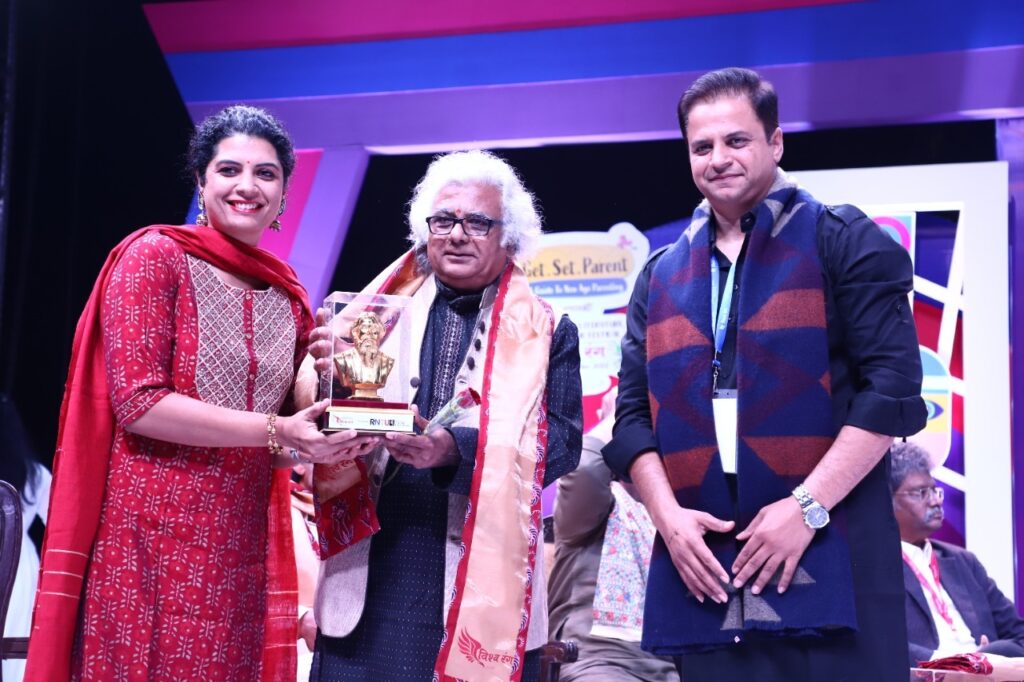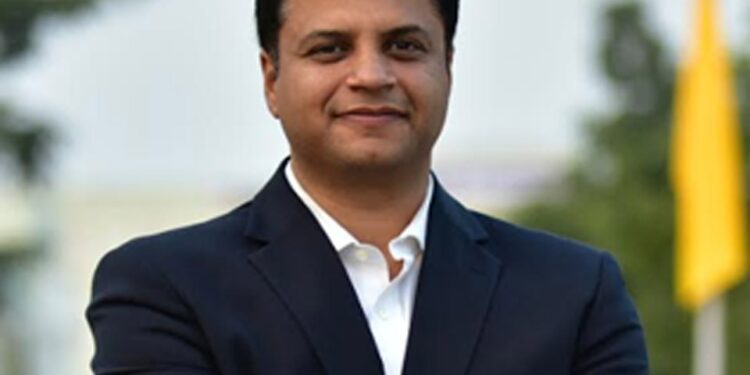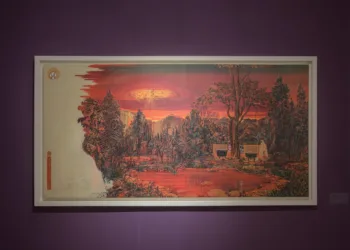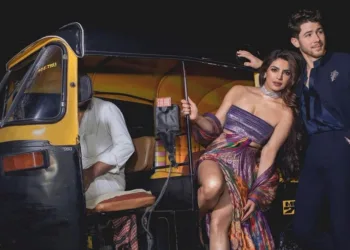Siddharth Chaturvedi, Co-Director of the much-acclaimed cultural festival Vishwarang 2022 is also the Director, All India Society for Electronics and Computer Technology (AISECT) that has a mission to promote skill-based learning and make quality global-standard education accessible and affordable to sub-urban and rural students. An MBA from S.P. Jain Institute of Management and Research, Mumbai and Bachelors of Engineering from MANIT, Bhopal, Siddharth is taking forward the vision of his father to provide a global platform to Indian languages, literature and arts and reach out to the remotest corners of the country to empower people. Young and ebullient Siddharth, bubbling with untiring dynamism, spoke to Vishal Duggal during the recently held mega cultural event in Bhopal. Excerpts of the interview…
How did the idea of Vishwarang come about?
I am supporting my father’s vision of AISECT, which is primarily a socially entrepreneurship driven organisation working in various verticals of skills, higher education and financial inclusion for the rural India, online learning and content development and so on. Under higher education, the group has established five private universities. Rabindranath Tagore University (RNTU) is the oldest university established by us, it draws heavily from the AISECT experience of grassroots connect, that is, reaching out to different communities working in Hindi and regional languages. So, when the entire group and the university was thinking of promoting the Indian culture, literature and various art forms, we earlier thought of becoming partners with any of the ongoing festivals; we did actually support a lot of events as a university.
But we realised that the objective of and the thought process of our festival was quite different from theirs and that’s how the idea came that we have to have our own way of expressing what we mean by a festival which is focused on Indian languages and art forms. That’s how the idea of Vishwarang came about. We didn’t know that it would be an annual property; we didn’t even realise what should be the scale. The first Vishwarang was more of an experiment and a learning ground in a pilot, but the learnings from there further cemented some of the other hypotheses or beliefs which we had. From there on we had a clearer path of where Vishwarang was going, but still it was at a very nascent stage. I would not say that we have fully discovered the true identity of the festival today. But we are broadly sure of the main objectives and the contours of this festival.

How do you think you have been able to bring writers and artists from other countries to India, act as a bridge between the Indian diaspora and their country of origin and also provide a cosmopolitan platform for global culture where boundaries of countries do not matter?
I think in this particular objective, Vishwarang has been quite successful because even during the first year Vishwarang started with partnering twelve countries and we discovered that there is a lot of love for Indian culture, art literature, and heritage amongst the Indian diaspora living in other countries. Some of the people we already were in touch with really liked the idea of having a common umbrella brand of a festival. And, during the first year more than what we got in India, the response was stronger in those countries where the ambassadors were giving congratulatory messages for their participating communities. So, that was one learning which we derived. And a blessing in disguise was that in 2020, when we did the festival virtually, we could not meet the people offline. But we generated tremendous reach because of the online meetings. And the intended message travelled to many countries and a lot of people who wanted to participate approached us through somebody or directly. So, now we have a strong network of around 50 countries. They all have done their country festivals before coming to Vishwarang: a two or three day festival involving the diaspora and some of the indologists who just have plain simple appreciation or love for Indian arts. We see that this community can become more cohesive and there is scope for adding many more countries because Indian diaspora is quite a force across the world.
But It is scattered and you want to bring it to a unifying platform…
Yes. And we are the platform where this happens at regular intervals. In fact, we already have invitations from at least five countries to come and celebrate Vishwarang at least for two or three days in their countries.
So, there is a scope that the main festival will continue in Bhopal, but mini festivals will come up in other countries at a slightly bigger scale.

How is your group contributing to the flourishing of an ecosystem where startups can really grow to their fullest potential? How far do you think AISECT can contribute towards a culture where India can have more and more innovative startups which can eventually become unicorns?
The growth of our organisation can be attributed to several micro or village level entrepreneurs who joined us in the last ten years or so. Today, we have a network of 20000 centers. Micro entrepreneurship is the key to our success. And continuing with that for the last four or five years, we have also become quite firmly entrenched in the new age startup ecosystem which is shaping up in the country.
We have a Union Ministry of MSMEs and also Government e-Marketplace (GeM). Will you be adding to their efforts? Do you mean to bring the entrepreneurs living in far off places and interiors to a kind of sustainable platform in your own way instead of them looking to the government?
We have set up central India’s first Atal Incubation Centre in the RNTU. We would like to see that we know the entire spectrum of tech enabled new startups going right up to the micro entrepreneur at the village level. So, we have maintained in our incubation centre or generally in our philosophy that whereas new startups and unicorns are important, an MSME or micro entrepreneur is equally important and needs a lot of facilitation. If we’re able to support these agri, small entrepreneurs to come up, a lot of economic activity and employment generation can be driven by these people.
Don’t you think that your efforts should also involve providing marketing support where small or rural-based artisans can sell their products? The government has set up an e-marketplace portal but not all of them are able to access that. So, how do you plan to help enterprises at the grassroots become viable?
We have done one pilot recently where we were already present in Dindori, and the tribal districts of Madhya Pradesh. While working with the SHGs, we realised that the minor millets being grown there called kuttu and kuttki are nutritionally very rich. So, we did a pilot of our own of procuring from the SHGs but giving them packaging, branding and market linkages support by launching cookies and other food products range based on millets. So, this health-based range of foods is recently prepared and launched by us which is the extension of the value chain of those enterprising people. But this solves the problem of only one particular product. We see great potential in becoming an aggregator platform of sourcing various kinds of products from tier-II and III towns and providing them a marketplace of national and international markets. I think the integration of One District One Product (ODOP) initiative with Open Network for Digital Commerce (ONDC) space will also contribute to this area.
We are focusing on becoming an aggregator platform for Indian handicrafts and traditional arts. This is just a sub-segment of many other e-commerce platforms, but one platform focused only on this art segment still holds a lot of potential. We will provide a marketing and promotional platform to handloom, handicrafts and anything which is traditionally made in any particular district or at least the ones where we have the reach.








